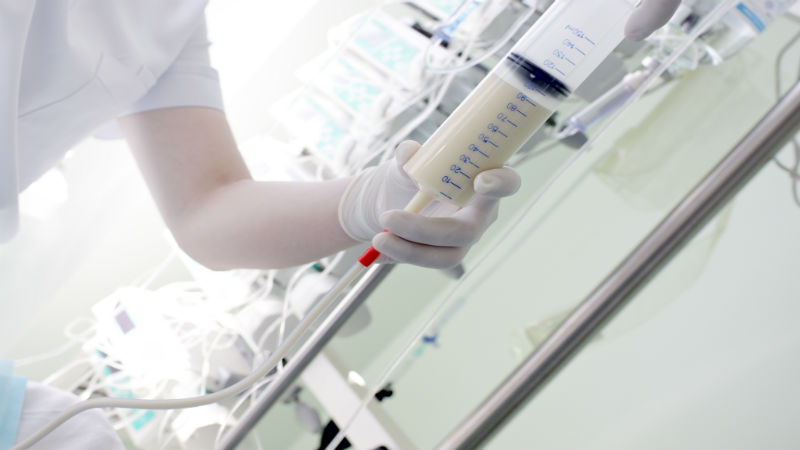Post-pyloric feeding is recommended in critically ill patients with gastro-intestinal intolerance. However, traditional placement methods are logistically difficult and carry potential risks. The authors retrospectively compared the position of post-pyloric feeding tubes (PPFTs) using an electromagnetic device that demonstrated by X-ray and analysed the complication rates, proportion of lung placements avoided and the time taken to establish enteral feeding. Forty placements in 37 mechanically ventilated patients were analysed; there was a success rate of 87.5%. Sensitivity and specificity were 77% (95% CI 59.9-89.6%) and 100% (95% CI 48.0-100%). Five lung placements were identified in real time and therefore avoided. The mean (SD) time from PPFT placement to X-ray was 134 minutes (± 139 minutes) and, to feeding, 276 minutes (± 213 minutes). In conclusion, placement of PPFT using an electromagnetic device carries a high success rate, is safe and feasible to undertake at the bedside in mechanically ventilated patients.
Danielle E Bear - Principal Critical Care Dietitian, Department of Critical Care and Department of Nutrition and Dietetics, Guy’s and St Thomas’ NHS Foundation Trust, London
Alice Champion - Specialist Dietitian, Department of Nutrition and Dietetics, Guy’s and St Thomas’ NHS Foundation Trust
Katie Lei - Research Nurse, Department of Critical Care, Guy’s and St Thomas’ NHS Foundation Trust, London
Luigi Camporota - Consultant in Critical Care, Department of Critical Care, Guy’s and St Thomas’ NHS Foundation Trust, London
Nicholas A Barrett - Consultant in Critical Care, Department of Critical Care, Guy’s and St Thomas’ NHS Foundation Trust, London
